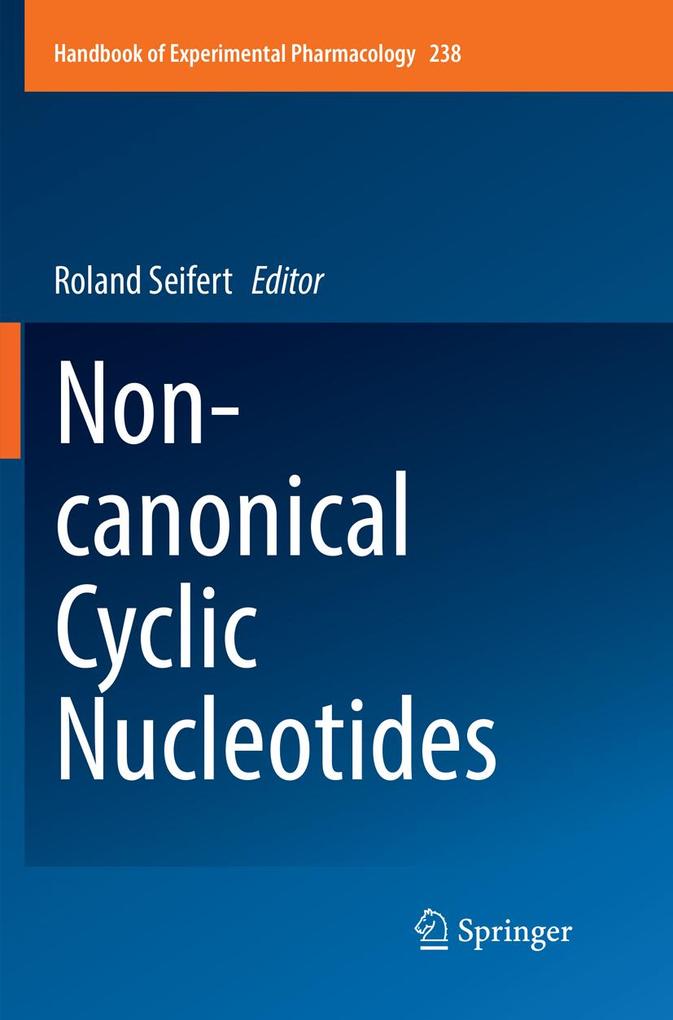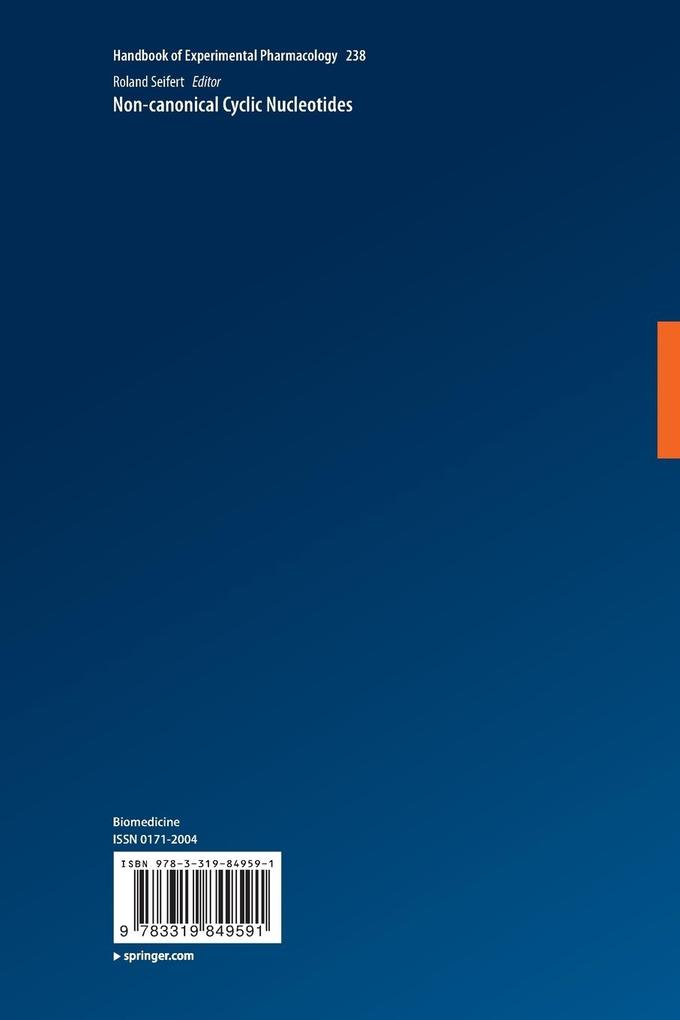The cyclic purine nucleotides 3', 5'-cAMP and 3', 5'-cGMP are well-established second messengers. cGMP has recently been covered in a volume of the Handbook of Experimental Pharmacology (volume 191). In addition to 3', 5'-cAMP and 3', 5'-cGMP, so-called non-canonical cyclic nucleotides exist. These comprise the cyclic pyrimidine nucleotides 3', 5'-cCMP and 3', 5'-cUMP, the purine nucleotide 3', 5'-cIMP, the 2', 3'-nucleoside monophosphates and cyclic dinucleotides. In this volume of the Handbook of Pharmacology, word-leading experts in the field summarize our current knowledge on these non-canonical cyclic nucleotides, discuss open questions, future research directions and the pharmacotherapeutic implications. Special emphasis will be given to the emerging roles of 3', 5'-cCMP and 3', 5'-cUMP as second messengers with regard to generators, effectors, biological functions, inactivation and bacterial toxins. The role of 3', 5'-cIMP as potential second messenger will also be critically discussed. Furthermore, we will consider transport of cyclic nucleotides and their potential role as first messengers. The role of the cyclic dinucleotide cGAMP in the immune system will covered, too. Lastly, the book will present important methodological aspects ranging from mass-spectrometric methods for cyclic nucleotide detection to the synthesis of nucleotide analogs as experimental tools and holistic methods for analysis of cyclic nucleotide effects.
Inhaltsverzeichnis
Part I: 3 , 5 -cCMP and 3 , 5 -cUMP as second messengers: cCMP and cUMP across the tree of life: From cCMP and cUMP generators to cCMP- and cUMP-regulated cell functions. - cCMP and cUMP in apoptosis: Concepts and methods. - Mammalian nucleotidyl cyclases and their nucleotide binding sites. - The Pseudomonas aeruginosa exoenzyme Y: A promiscuous nucleotidyl cyclase edema factor and virulence determinant. - Cyclic nucleotide monophosphates in plants and plant signalling. - cAMP-dependent protein kinase and cGMP-dependent protein kinase as cyclic nucleotide effectors. - Regulation of HCN ion channels by non-canonical cyclic nucleotides. - Identification of cCMP and cUMP substrate proteins and cross-talk between cNMPs. - Inactivation of non-canonical cyclic nucleotides: Hydrolysis and transport. - Part II: 3 , 5 -cIMP, 8-nitro-cGMP, 2 , 3 -cNMPs and cyclic dinucleotides as signaling molecules: 3 , 5 -cIMP as potentialsecond messenger in the vascular wall. - The discovery of 2 , 3 -cNMPs in mammalian systems: From rodents to humans. - 8-Nitro-cGMP: A novel protein-reactive cNMP and its emerging roles in autophagy. - Cyclic dinucleotides in the scope of the mammalian immune system. - Part III: Methods/Tools for cNMP research: Mass-spectrometric analysis of non-canonical cyclic nucleotides. - Medicinal chemistry of the noncanonical cyclic nucleotides cCMP and cUMP. - Holistic methods for the analysis of cNMP effects. - The chemistry of the non-canonical cyclic dinucleotide 2' 3' -cGAMP and its analogs.














